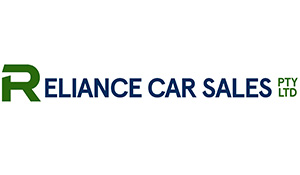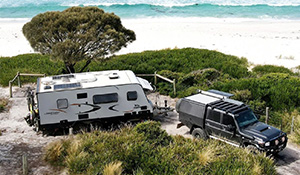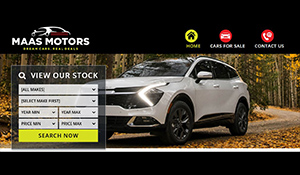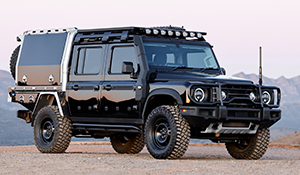How To: Bull Bars
Usage. When choosing a bull bar for your vehicle it’s often tempting to prioritise aesthetics over functionality. After all, you want your vehicle to look good, right? But far more important than looks when choosing a bar is intended vehicle usage.
A bull bar performs several functions. The primary function is, quite obviously, to protect vital vehicle components in the event of an animal strike, but bars are also used as a mounting platform for accessories such as a winch, driving lights, light bars and antennas.
Important factors that will influence which bull bar you choose can include where you intend to drive your vehicle, the type of driving you’ll do with it, how much gear you’re likely to carry and what accessories you want to fit. You’ll also have to be confident that the bull bar you choose is well designed, properly engineered and manufactured to a high standard, and that it’s compatible with all of your vehicle’s safety systems, such as SRS airbags, parking sensors, lane departure warning systems and active cruise control systems.

The right material. Most bull bars are made from steel, aluminium or plastic. As a general rule, steel bull bars offer the greatest strength, and so are best suited to vehicles that are driven where there’s a high chance of an animal strike, such as in the outback.
As a general rule, steel bull bars offer the greatest strength, and so are best suited to vehicles that are driven where there’s a high chance of an animal strike, such as in the outback.
While alloy bars are not as strong as steel bars, they have the advantage of being significantly lighter. This means they have less of an effect on vehicle handling, as well as wear and tear on components such as suspension and tyres. In addition to this, alloy bars offer greater corrosion resistance than steel bars, and an attractive highly polished finish. Some manufacturers of alloy bull bars use a variety of alloy grades and intricate shapes to achieve strength approaching that of steel bull bars.

An alternative to steel and alloy is plastic. The most renowned manufacturer of plastic bull bars is SmartBar, and these are made from a roto-moulded low-density polyethylene that’s UV stable and resistant to chemicals. SmartBars are light, corrosion resistant and, in the event of minor impacts, they will often return to their original shape, which as obvious cost benefits.
Regardless of the material you choose, steel, alloy and plastic bars can all be used to mount accessories, but it should be noted that you’ll need a separate steel winch cradle if you want to fit a winch to an alloy or plastic bull bar.

Design Choosing the overall design of a bull bar should once again be primarily about usage. If you’re going to drive in areas where there’s a good chance of an animal strike, you’ll want a bar that provides protection to as much of the vehicle as possible, which includes the cooling system, the bonnet, under vehicle components and the headlights.
If you’ll be doing a lot of off-road driving through scrub and in rocky terrain, look for a bar with outer tubes that are compatible with side rails and steps, which will also offer protection down the sides of the vehicle.

If your bull bar will primarily be used for mounting accessories, and you drive where there’s minimal chance of an animal strike, you might not need the full protection offered by outer tubes. There are a number of bars on the market with just a centre tube, while others almost mimic the appearance of the vehicle’s original bumper design, with no top tubes at all.
Rock crawlers will opt for a different type of bar altogether; one that is able to accommodate a winch and offer extreme approach angles and recovery point options.
No matter what bull bar design you opt for, make sure it doesn’t have a negative impact on your vehicle’s approach angles and ground clearance; look for a bar with upswept outer wings. A quality bar will also be model specific, so it will have a contour that matches the design of the vehicle.

Mounting If your vehicle is equipped with airbags, you want to be certain that the bull bar you buy has an airbag compatible mounting system. Manufacturers will state which model bull bars are airbag compatible and which are not, and some have even conducted real-world crash testing to ensure compatibility, while others rely on computer simulations. If you’re at all concerned, check with the individual bull bar manufacturer to see how they achieve airbag compatibility.
Many modern vehicles are equipped with additional safety features such as parking sensors, radar cruise control, emergency braking systems and lane departure warnings. These systems rely on sensors and cameras and if your vehicle is so equipped you must make sure the bull bar you buy is compatible with them.

Accessories If you want to fit a winch, make sure the bull bar you choose is winch compatible. Some bull bar models can be fitted with or without a winch. In the case of steel bull bars, a winch can often be bolted straight in, but with alloy and plastic bars you’ll need a winch cradle to be fitted.
If you want to fit driving lights, light bars and antennas, make sure there is sufficient provision for the fitment of such items. Most bull bars will have holes for mounting driving lights and tabs for antennas.
For fitment of side rails and steps, make sure the bull bar has compatible outer tubes. And if you want to fit additional under vehicle protection such as a skid plate, bash plate or steering guard, make sure it will fit with the bar you choose.
Additional features to look for in a bull bar include high-lift jack points, fog lights and daytime running lights, as well as aesthetic components such as buffers and cover plates for when no winch is fitted.

Suspension upgrades Bull bars weigh more than OE bumper bars so you might have to upgrade your vehicle’s suspension to account for this extra weight, especially if you also fit a winch and other accessories.
There are plenty of aftermarket suspension kits on the market designed to account for the additional weight of a bull bar and other accessories, and many manufacturers will offer several spring and damper kits specifically designed to suit vehicles with a plastic or alloy bar, a steel bar, or a bull bar and a winch.










